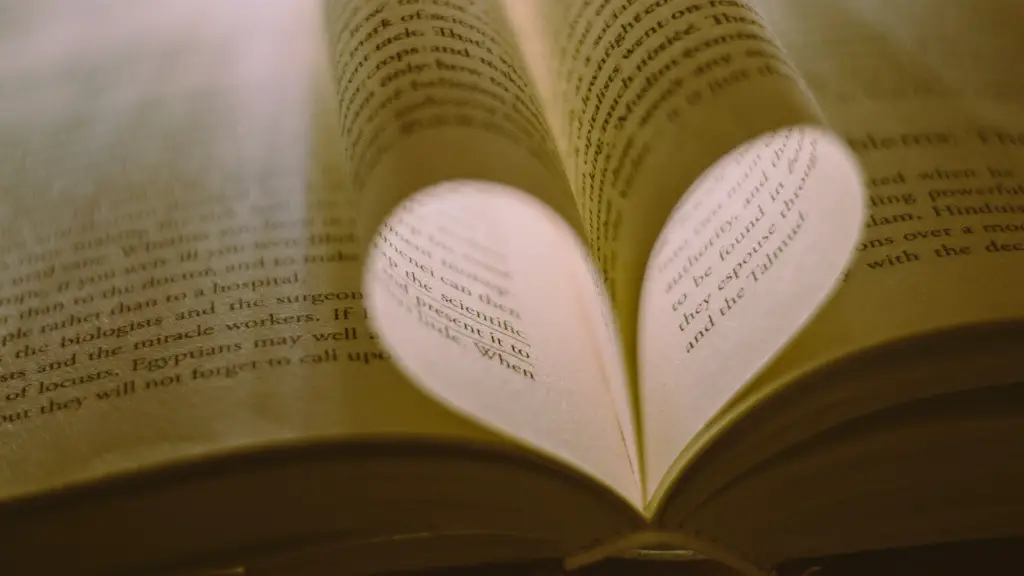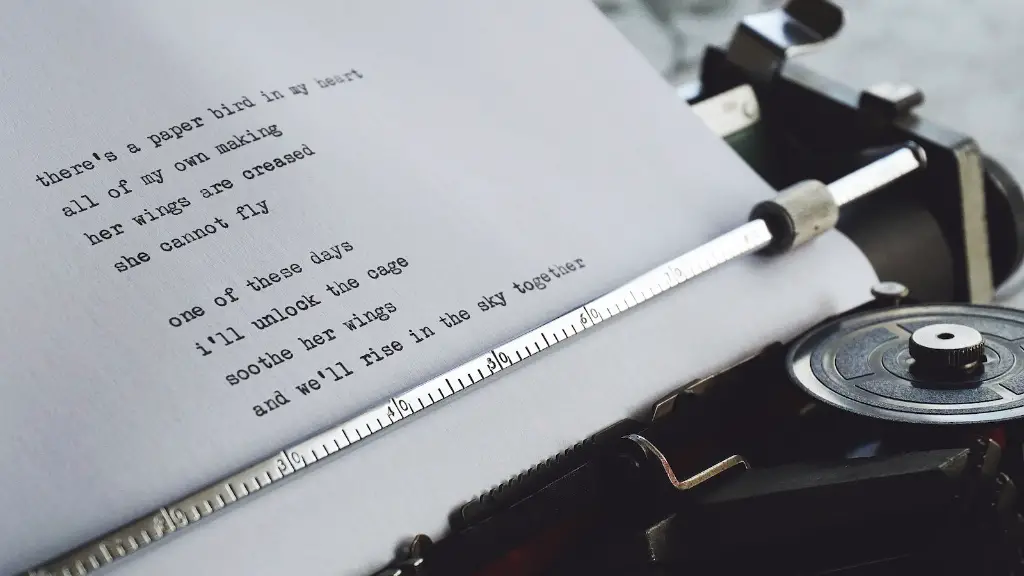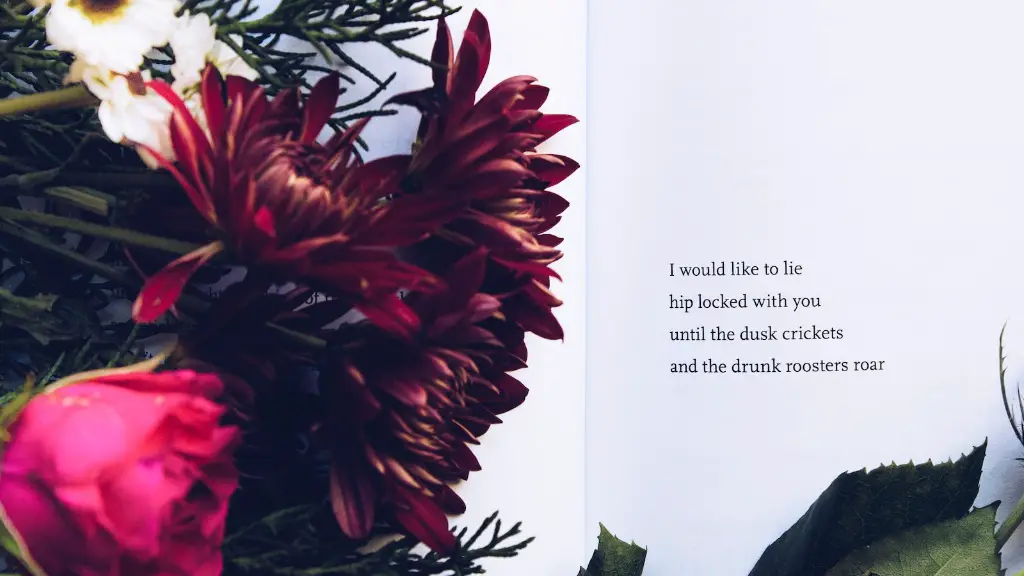What is a Paradox in Poetry?
A paradox in poetry is a statement or phrase which appears to contradict itself, yet is surprisingly accurate or true. It is an intentionally self-contradicting statement which can be interpreted in different ways, and is designed to provoke thought or draw attention to a particular fact. Paradoxes are a type of figurative language which are sometimes used in poetry to challenge the reader’s perception of the world.
Why use Paradoxes in Poetry?
By introducing a paradox into a poem, the poet is able to challenge the reader’s preconceived notions and to open up a discussion about a particular idea. A paradox can be used to reveal a hidden truth that normally could not be expressed in a straight-forward manner. It can be a tool to express complex emotions or ideas in an interesting and mysterious way, forcing readers to think beyond the literal meaning of the words.
Examples of Paradox in Poetry
One of the most famous examples of paradox in poetry is Robert Frost’s ‘The Road Not Taken’. In this poem, two roads diverge in a yellow wood, and the narrator must decide which one to take. By taking “the one less travelled by”, the narrator believes that he may find a unique experience, yet in the process of taking the path, he is paving it for others. This statement can be interpreted as a paradox, as the narrator is simultaneously blazing a path for others to follow, and taking a path that nobody has taken before.
Other examples of paradox in poetry can be found in William Wordsworth’s ‘The World is Too Much With Us’ where the narrator is lamenting the modern world and its obsession with technology and material possessions. The speaker notes that “we lay waste our powers” and by seeking material comforts, we are losing our connection to nature. This sentiment appears to contradict itself, as the speaker is using material possessions such as paper and pen to write the poem.
Types of Paradox in Poetry
One type of paradox in poetry is an oxymoron, which is when two contrasting ideas are combined to create a unique statement. Examples of oxymorons in poetry include Shakespeare’s ‘to be in one place, another’ from Sonnet 144 and ‘break free from chains’ from Robert Frost’s ‘Reluctance’.
Another type of paradox in poetry is a paradox of scale, where the reader must consider a phenomenon from a larger and a smaller perspective. An example of this type of paradox is T.S. Eliot’s ‘The Hollow Men’, where the speaker is discussing how human beings are both insignificant and impactful.
What is the Purpose of Paradoxes in Poetry?
Paradoxes in poetry allow poets to explore complex questions and to examine their own deeply personal thoughts and opinions. They can also be used to provoke thought and to introduce a fresh perspective on a familiar topic. They encourage readers to step back and view the world in a new way, dismantling preconceived notions and developing a broader sense of understanding.
The Role of Paradoxes in Modern Poetry
In modern poetry, paradox is used to reflect the complicated and chaotic nature of human emotions. Contemporary poets often use paradoxes to explore subjective topics such as identity, love and loss. By introducing paradoxes into their writing, poets can express complex feelings in a fragmented, yet precise way.
The Use of Paradoxes in Poetry as a Literary Device
Paradox as a literary device allows poets to draw attention to a particular idea or to challenge the reader’s preconceived notions about a topic. It encourages them to think about the world in a different way, and to explore ideas which may have been previously viewed as antithetical. By presenting an argument which appears to contradict itself, poets are able to ask the reader to suspend their disbelief, and explore a different perspective.
The Effect of Paradoxes in Poetry
Paradoxes in poetry can have a powerful impact on the reader. By introducing a statement which appears to be self-contradictory, poets can draw attention to a particular line of thought and provoke deeper reflection. Paradox can be used to challenge the reader’s perceptions of the world and to create a new understanding, which can be both intellectually and emotionally stimulating.
The Benefits of Using Paradoxes in Writing
By introducing paradoxes into their writing, poets can create a unique and intriguing style. They can also explore the complexities of life and human emotions in a way that is both intriguing and engaging. In addition, by challenging the reader’s preconceived notions and introducing perspectives which appear to contradict themselves, poets are able to broaden the minds of their readers and open up a discussion about a particular idea.
Challenges of Using Paradoxes in Writing
One of the challenges of using paradox in writing is that it can be difficult to write a compelling statement that is both self-contradictory and accurate. It is also important to ensure that the paradox is not too complicated, as this can make it difficult for the reader to understand the message. Additionally, the use of paradoxes can be overused, which can weaken the impact of the statement.
Conclusion
Paradox in poetry is a powerful literary device that can be used to challenge the reader’s preconceived notions and to open up a discussion about a particular idea. By introducing paradoxes into their writing, poets can explore the complexities of life in an intriguing and engaging way. Additionally, using paradox can draw attention to a particular line of thought and provoke deeper reflection.


